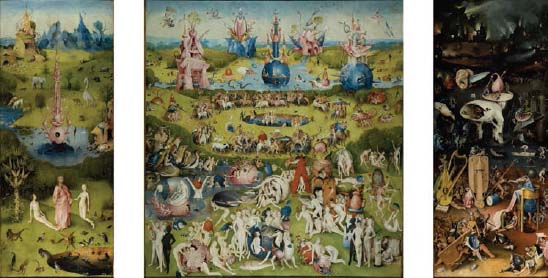The Early Modern World, C. 1300–1600Sixteenth-Century European Art and Architecture |
Who was Hieronymous Bosch? |
Hieronymous Bosch (1450–1516) was a successful painter from the Netherlands who painted large, complex, usually Christian-themed works of art that continue to puzzle viewers and scholars to this day. An example of his imaginative and highly skilled work is the triptych, The Garden of Earthly Delights, which depicts The Garden of Eden on the left, earthly life in the center, and Hell on the right. On the exterior of the triptych, Bosch painted what scholars believe is the creation of the Earth. The Garden of Earthly Delights is filled with surreal imagery, such as a bulbous pink fountain, a sharp knife with a pair of human ears, figures cavorting inside transparent spheres, and monsters feeding on souls in Hell. While some scholars believe certain images are metaphors for alchemy (a tradition of science and philosophy focused on turning various metals into gold), the work is generally considered to be a critique of human behavior, suggesting that sin will be punished in Hell. Pieter Brueghel the Elder’s Netherlandish Proverbs (1559), also known as The Topsy Turvy World, is similarly focused on human folly.

The Garden of Earthly Delights (c. 1500–1505) is a triptych by Netherlandish painter Hieronymous Bosch, whose three panels are devoted to scenes of Paradise, Earth, and Hell. For the modern viewer, Bosch’s strange worlds evoke a sense of twentieth-century surrealism.
